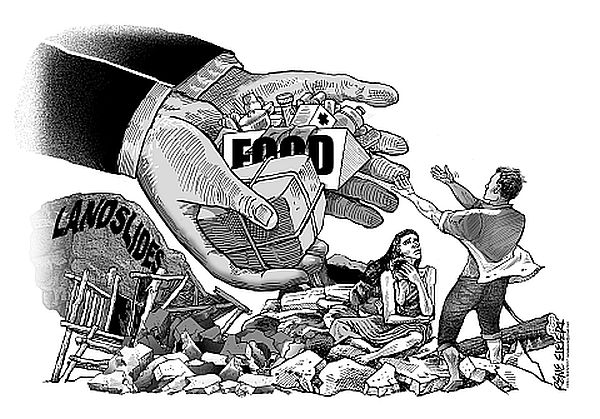
Officials first attributed the series of landslides in the area to fault line movement.
It turned out, however, that the earth shifted there due to the softening effect of persistent rain.
Municipal and provincial geoscience and disaster relief leaders are working to reach upland residents now cut off from the town proper by mounds of soil blocking the roads.
We hope their operations will be speedy and that all the affected townsfolk may be moved out of isolation and onto safer, solid ground.
Those who can provide quick assistance to Boljoon due to proximity in municipalities like Oslob and Alcoy are duty bound to help their neighbor.
But the national government must also hearken to Mayor Merlou Derama’s cry for help especially for paving an alternative route for the delivery of relief goods.
Even as homeowners may have to struggle with the idea of leaving familiar territory, they must manifest their appreciation to a donor who indicated willingness to donate to the government four hectares of private land as permanent relocation sites for them.
Such magnanimity is a much-needed source of hope in this time of distress.
Nevertheless, we cannot overstate the primacy of prevention over cure. Relief efforts would not be necessary if disasters were averted.
Concerned officials must now make concerted efforts to teach the public what can be done to reduce the possibility of landslides.
Boljoon’s mountain barangays are not the first to crash under the rain. Cebu City’s uplands have witnessed frequent landslides with continual precipitation.
Are the trees getting back at us? Are the mountains and hills falling because they are no longer held together by expansive, intertwining roots of trees?
If reforestation is the main answer, it has become more urgent than ever.